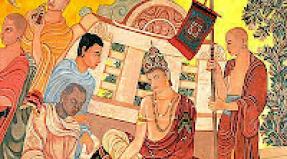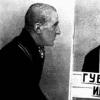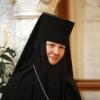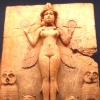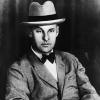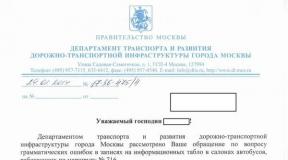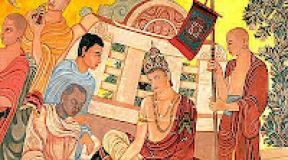Sambo history briefly. What is sambo? Features of martial art. The emergence and development of sambo wrestling
Combat Sambo is a martial arts that was created back in the 30s on the territory of the USSR specifically to train law enforcement officers. At that time, sambo did not belong to the sports disciplines, and was generally considered prohibited for study by civilians. In 1991, combat sambo was opened to everyone and also became a separate sport. The first championship took place in 1994 in Moscow.
Combat Sambo is very different from Sambo wrestling, in which we deal with the demonstration of throwing techniques and the use of painful techniques. As for combat sambo, the task here is to eliminate the enemy’s physical aggression using various types of technical actions. The winner of the fight is the one who forces his opponent to voluntarily surrender, or makes him incapacitated to participate in the current fight.
Combat Sambo today is an international sport that was created in Russia and embodies all the best of martial arts. Combat sambo is the national wealth of our people and one of the assets of our state.
Even before the First World War, a famous Russian fighter - his name was Ivan Vladimirovich Lebedev, developed a special course for training police officers in the city of St. Petersburg. This course was completed by thirty police officers and police officers, all of whom received instructor diplomas. Combat Sambo itself, as a system of training people who are employees of law enforcement agencies, became known in March 1915, just during the publication of the book “Self-Defense and Arrest,” written by I.V. Lebedev.
Further, sambo developed in two directions: the first is closed combat sambo (as a secret weapon), the second is open combat sambo (a sport). With the help of completely harmless fighting techniques, starting from the 30s, they began to prepare young guys for military service. For 70 years now, this type of martial art has been called “sambo wrestling”.
A man named Anatoly Arkadyevich Kharlampiev became a particularly passionate enthusiast and fan of this type of wrestling. He promoted the art of self-defense, demonstrating various techniques in front of thousands of people. Anatoly Kharlampiev wrote a huge number of books dedicated to “sambo wrestling” and “combat sambo”.
Since the 80s of the last century, all prize-winners and champions in sambo have been trained by Kharlampiev’s student, who is a professor at the Department of Physical Education and Sports at the Moscow Energy Institute, Valery Valentinovich Volostnykh.
The rules for combat sambo were first published in the book “Encyclopedia of combat sambo”, which was written by V.V. Volostnykh, A.G. Zhukov, and V.A. Tikhonov.
In March 1995, trainers Volostnykh V.V., Zhukov A.G., Tikhonov V.A., Muleev R.A., Maly A.A. A public association was founded, which was called the “Russian Combat Sambo Club”. In the same year, thanks to the initiative of the created Club, the World Association of Clubs united by one idea was founded - the development of this sport.
In 1995, the Russian Combat Sambo Club held two championships - the Eurasian Championship and the World Championship.
In 2002, on January 17, the Russian Combat Sambo Federation was registered by the Ministry of Justice of the Russian Federation. All this was done in order to develop and popularize sambo in our country. And also in order to increase the role of physical culture in the life of every person, strengthen the position and increase the prestige of Russian Combat Sambo, which is being promoted to the international arena.
In 2003, on May 23, the Russian Combat Sambo Federation transferred all the necessary documents to the State Committee of Culture and Sports of the Russian Federation, so that this sport was included in the All-Russian Register.
Combat Sambo is a sport that all Russians should practice. Why? The answer is obvious. This type of martial arts is much closer to the Russian people in its philosophy, spirituality and ideology than other types of oriental martial arts.
Find a sambo section in
The main thing that has always distinguished the Russian duel is humanity towards the enemy. In the system of Russian hand-to-hand combat there have never been any techniques specifically designed to kill or maim an enemy. Russian martial art, thus, is a reflection of the humane Russian spirit, ennobled by the Orthodox faith and characteristic of our people. In good intention and the direction of strength lies the power and invincibility of the Russian people.
“We are Russians, and God is with us!” - said the invincible Suvorov. It is this calm courage and nobility of Russian strength that anti-Russian ideologists seek to destroy, introducing Eastern martial arts based on cruelty, preaching Western individualism, which is alien to us, where in order to save one’s own life one must kill one’s neighbor or take away the last thing from him.
We should be proud of that unique phenomenon, whose name is Russian hand-to-hand combat. And one of its initial systems is SAMBO wrestling.
Background to the development of SAMBO
For those who are superficially familiar with sambo, the following statements are typical: “Sambo is the same as judo!”, “Sambo cannot compare with karate (aikido, taekwondo, and so on).” This is what those who see only the “tip of the iceberg” can say. The foundation of sambo wrestling is associated with the name of the famous researcher and practitioner of wrestling of the 20th century, Anatoly Kharlampiev. He came from a famous dynasty of wrestlers, athletes and fist fighters.
The Kharlampievs have always been characterized by a craving for martial arts and physical culture. Georgy Yakovlevich (1861-1911) and his children practiced, in modern terminology, athletic gymnastics every day. Athletic activities and physical labor were, for the male half of the family, like preparatory exercises for a good sport - fist fights, held on the shore or ice of the Dnieper.
His son, Arkady Georgievich Kharlampiev, grew up in such a family, but became... an artist, graduated from the Moscow School of Painting, Sculpture and Architecture and the Paris Academy of Fine Arts. In his free time, Arkady Georgievich worked part-time in the circus as an acrobat and wrestler in order to be able to study and support his family. Excellent physical training helped him in this. At the circus arena he met such wonderful people and famous wrestlers as Zaikin, Poddubny and Lebedev.
Ivan Vasilyevich Lebedev, better known as “the athletics professor” or simply “Uncle Vanya,” was the first in Russia to publish a book on self-defense for special use, “Self-Defense and Arrest” (Petrograd, 1915). The book outlines the techniques of Japanese “jiu-jitsu” wrestling, which was just beginning to gain popularity in Europe and was completely unknown in Russia at that time.
While studying at the Paris Academy, after classes Arkady Kharlampiev went to the Boxing Club. Having perfect mastery of fist fighting techniques, he easily mastered English boxing and within a few months he was performing in the ring under the name Charles Lampier. The victories of the Russian Charles followed one after another. After graduating from the Academy, he returned to Moscow, where he acted as a teacher, organizer, propagandist, judge and practicing boxer. In addition to wrestling, Arkady Kharlampiev was fond of mountaineering and even participated in climbing Stalin Peak (later Communism Peak, now Ismail Somoni Peak).
Since the beginning of the First World War, Arkady Kharlampiev went to the front, where, as newspapers wrote, he was considered missing. However, a few years later, after escaping from captivity and hospital, the athlete reappears in France and performs in the ring under a name already known to us. Again victorious battles, resounding success, a trip to bourgeois Estonia and coaching activities there. In 1922, with the help of the former chairman of the Military Revolutionary Committee N.I. Podvoisky Kharlampiev returns again, to already Soviet Russia.
The Kharlampiev family carefully preserves an archive, the beginning of which was laid by Arkady Georgievich, who collected books on various types of martial arts and martial arts. In the mid-20s, Arkady Georgievich developed more than a dozen physical education programs for technical schools and institutes; Self-defense training plays a significant role in these programs.
Soon after this, due to health reasons, Arkady Kharlampiev ends his performances in the ring and begins coaching and scientific activities. The sons of Arkady Georgievich, having completed courses for physical education instructors, begin to work under the guidance of their father in the OSMC (Society of Builders of the International Red Stadium). The father entrusts his son Anatoly with the search and processing of games, both known and forgotten, for organizing and carrying out mass actions.
In his notes (1922-1925), along with lapta and towns, descriptions of Russian, Tatar, Gypsy and other types of folk wrestling appear. It is from this moment that the development of a new self-defense system begins.
In 1929, Arkady Georgievich brings Anatoly to the CDKA (Central House of the Red Army), where he worked at that time, and introduces him to his friend, judo coach Vasily Sergeevich Oshchepkov, a widely erudite teacher and expert, who in practice studied the secrets of Japanese wrestling at the Institute Kodokan. A true professional, Oshchepkov was well acquainted with various types of martial arts and martial arts systems and taught what he knew best. In a collection of materials on academic disciplines, published in 1934, he gives the methods and tactics of the martial art of jujutsu, and also provides rules for sports judo.
An interesting fact is known: Vasily Oshchepkov was one of the first graduates of the Tokyo Theological Seminary, founded by Archbishop Nicholas of Japan at the Japanese Theological Mission. Left early without parents, by the will of fate, Vasya Oshchepkov ended up in Japan as a boy, where he remained at the Tokyo mission. Vasily Oshchepkov was blessed by Saint Nicholas himself to practice martial arts.
Oshchepkov student of the Tokyo Theological Seminary
Distressed by the news of the crushing defeats of the Russians in the war with Japan, Vladyka Nicholas saw one of the main reasons for the failures of the Russian army in the unpreparedness of the soldiers for hand-to-hand combat.
Over time, due to health reasons, Vasily Sergeevich limits his coaching activities and transfers the judo section he organized at the Krylia Sovetov Palace of Physical Culture to his student Anatoly Kharlampiev, who was still a student at that time. In 1935, Anatoly Kharlampiev headed the Moscow city section, and in 1937 he was elected a member of the Presidium of the All-Union Judo Section.
During these years, severe trials awaited Anatoly. His father, who suffered from a serious illness - pyelonephritis, which he received while participating in the Pamir expedition, died in the summer of 1936. A year later, on October 2, 1937, coach and teacher V.S. Kharlampiev was arrested on charges of espionage. Oshchepkova. On December 10, while in pre-trial detention in the dungeons of the NKVD, he died of a heart attack.
Freestyle wrestling
Having survived the death of his father and mentor, Kharlampiev took up the work they had started with even greater zeal. At first, even his students did not know about the research activities of Anatoly Arkadyevich, who took the educational material he offered during training as “pure juu-do.”
The year 1938 is a significant milestone not only in the activities of Anatoly Kharlampiev, but also in the history of self-defense and wrestling. Having prepared the Moscow Championship and successfully participated in it, Kharlampiev received an offer from the All-Union Committee for Physical Education and Sports under the Council of People's Commissars of the USSR to head the 1st All-Union Judo Camp.
Kharlampiev, with his usual enthusiasm, began organizing a coaching camp, but not in judo... “Freestyle wrestling” was the name of the new self-defense system in the Soviet press and official documents. Anatoly Kharlampiev introduced the conference participants to the wealth of knowledge that he had managed to collect and systematize by this time.
The proposed SYSTEM used all the best and most expedient of national types of wrestling and various self-defense systems, and universal rules made it possible for a wrestler of any nationality to compete equally with everyone else.
Vasily Sergeevich Oshchepkov with his students
On November 16, 1938, the VKFKiS issued Order No. 633 “On the development of freestyle wrestling.” This day became the birthday of SAMBO wrestling. In 1939, the first USSR championship in “freestyle wrestling” was held.
The Great Patriotic War, which began on June 22, 1941, suspended the development of sambo, but it also tested the viability of the new fight in extreme conditions. Athletes and coaches defended their Motherland with honor, participated in the training of fighters and commanders, fought in the ranks of the active army, successfully applying the knowledge and skills they acquired, which often saved their and their comrades’ lives. Many of them were awarded high government awards.
Anatoly Kharlampiev volunteered for the front almost from the very beginning of the war, reached Konigsberg (Kaliningrad) and ended the war in the Far East. No matter what sector of the front he was on, he successfully applied the acquired knowledge and accumulated combat experience in practice. Anatoly Arkadyevich was awarded government awards - the Order of the Red Star and many medals. He ended the war with the rank of senior lieutenant.
Development of SAMBO in the post-war period
After the war A.A. Kharlampiev works at the Dynamo Sports Society, where in the 20-30s Spiridonov’s self-defense system, which was called “SAM”, “SAMOZ”, “Self-defense without weapons”, was cultivated on the basis of jujutsu. The latter name was transferred to the system created by Kharlampiev. It is more correct to decipher the abbreviation SAMBO as a system of SELF-DEFENSE and WRESTLING. Thus, SAMBO wrestling is an integral and indivisible part of the entire SAMBO system.
In the post-war period, the popularity of sambo wrestling grew, the number of its adherents increased, as sambo wrestlers easily defeated wrestlers who mastered only one type of national wrestling.
In the early 50s, the Dynamo management decided to make Sambo wrestling a departmental sport. Anatoly Kharlampiev could not agree to this, since he saw the further development of the sambo system exclusively in its mass character. In March 1953, Kharlampiev submitted his resignation to the reserve and went to work as a teacher at the Department of Physical Education at the Moscow Energy Institute. In a very short time he becomes an associate professor of the department, and his students win prizes at competitions at all levels.
In 1969 A.A. Kharlampiev took a direct part in organizing the activities of the Paratrooper club in the Khamovnichesky district of Moscow. Later this club was transformed into the Sambo Club named after A.A. Kharlampiev, who continues to this day the traditions of the first coach and creator of the sambo system.
Over a quarter of a century of work at MPEI, Anatoly Kharlampiev trained, as they say, “from scratch,” more than 70 masters of sports, which in itself is unique. Half of them subsequently became candidates and doctors of technical sciences.
Popularity of SAMBO in the world
Recognition of the priority of the domestic wrestling system led to the temporary cessation of the cultivation of judo in the USSR. In addition, judo began to be considered a prohibited system, promoted by “Japanese militarists.”
It should be noted here that, having evolved from judo, sambo over time, accumulating and absorbing the experience of various martial arts, began to significantly surpass its predecessor. Despite this, in the early 60s, due to the predominance of the financial side over the professional side in Soviet sports, publications such as “From jiu-jitsu to sambo”, “Sambo - renamed judo” began to appear in the press. Spiridonov and Oshchepkov were declared the founders of sambo, and the name of Kharlampiev was relegated to the background. The competitions were held not in sambo, but in judo, for the development of which significant sums began to be allocated.
It is significant that the first independent sambo federation appeared not in Russia, but in Bulgaria (1957), then in Japan (1965) and in Spain (1972). In 1972, the First European Sambo Wrestling Championship was held in Riga, in 1973 the First World Championship was held in Tehran, and the World Cup was held in Oviedo in 1977. Despite resistance from officials from the Sports Committee, Kharlampiev’s students from MPEI, with the support of the Moscow Government, organized All-Union memorials in Moscow in 1981.
In 1996, sambo wrestling entered the world stage and was recognized at the congress of the International Wrestling Federation (FILA) as an original and independent international sport, along with freestyle and Greco-Roman wrestling. FILA Secretary General Fernando Compte, commenting on his ardent sympathy for this type of wrestling, said:
“SAMBO is the most democratic, most accessible, most dynamic and therefore the most modern form of wrestling. This is what explains the rapid growth of his popularity.”
In March 2001, the next XXII International Sambo Tournament “Kharlampiev Memorial” was held. Sambo wrestling will rightfully become an Olympic sport in the near future and will be included in the Games program.
Invincible weapon
Adherents of various types of wrestling and martial arts often claim that only their type of martial arts is universal and has significant advantages over others. Kharlampiev himself gives the following description of his system:
“Which is better, SAMBO or judo, SAMBO or karate? To this I always answer this way: a part cannot be greater than the whole. The SAMBO system has absorbed all the best and expedient that folk wrestling and self-defense systems could offer us.”
Sambo wrestling is one of the cultural symbols of our Motherland, which we can and should use. She was born in Russia and, being the property of our multinational people, is open for further development and improvement. Its revival should serve to unify and unite the Russian state, to return to the former great empire its invincible weapon - Russian hand-to-hand combat. It is appropriate here to recall the words of the famous practitioner and theorist of the “Russian style” A.A. Kadochnikova:
“Hand-to-hand combat is an invisible weapon that cannot be detected until it is used, and cannot be taken away while the person is alive.”
And anyone who considers himself a citizen responsible for his life and the well-being of his neighbors can and should master it to the best of his ability. We must also remember the indispensable condition for the success of using this weapon: the good direction of the will of the person using hand-to-hand combat techniques. Otherwise it may turn against him:
“All who take the sword (with evil intent) will perish by the sword,” says the Lord (Matthew 26:52).
Combat Sambo
Emblem of the All-Russian Sambo Federation.
Sambo(a compound word derived from the phrase “ myself protection b without O guns") is a type of martial arts, as well as a comprehensive system of self-defense, developed in the USSR as a result of the synthesis of many national types of martial arts and, in particular, judo. It is one of the types of wrestling in clothes. The official date of birth of this sport is considered to be November 16 of the year in which it was published. Order of the All-Union Committee for Physical Culture and Sports under the Council of People's Commissars of the USSR No. 633 “On the development of freestyle wrestling” ("freestyle wrestling" was the original name of the sport, later renamed "sambo").
Sambo is divided into two types: sambo sports And combat.
History and philosophy of sambo
Founders of Sambo
At the moment there is no consensus on who is the founder of sambo. Officially, the founder of sambo wrestling is Anatoly Arkadyevich Kharlampiev, whose book “Sambo wrestling” was published many times in the Soviet Union. Anatoly Arkadyevich chaired the scientific and methodological conference of the “1st All-Union Coaching Camp”, held in May 1938, at which the main issues of the creation and development of “freestyle wrestling” were discussed, and was also appointed senior coach of the camp. He was the first to head the “All-Union Freestyle Wrestling Section” organized in 1938 (the future Sambo Federation).
Most sources believe, however, that the foundations of the struggle were laid even before Kharlampiev. The foundation was laid by Vasily Sergeevich Oshchepkov (whose student was Kharlampiev) and Viktor Afanasyevich Spiridonov (1881-1943).
Oshchepkov was an excellent judoka, a student of Jigoro Kano, the third European to receive second dan in judo at the Kodokan (personally from Jigoro Kano). Oshchepkov fell victim to general spy mania, was arrested, accused of spying for Japan along with other intelligence officers of the 4th Directorate of the NKVD, and died in prison 10 days after his arrest from a heart attack. Oshchepkov was rehabilitated this year.
Spiridonov was an officer in the Russian Imperial Army and later worked in the NKVD system. He studied jujutsu even before the 1917 revolution. He headed the work in the field of applied sports discipline “self-defense without weapons” in the Dynamo society.
After the death of Oshchepkov, Kharlampiev became the head of the All-Union Freestyle Wrestling Section, since Spiridonov could not be a public figure. The study of the struggle of the peoples of the USSR began under Oshchepkov. Spiridonov, in addition to jujutsu, was an expert in boxing and savat (although these techniques were not included in sports sambo as they were dangerous).
Combat Sambo
Unlike sambo wrestling, the task of a sports match is not only to demonstrate the throwing technique of wrestling in clothes or the technique of painful holds. In a combat sambo match, it is the effectiveness of technical actions to eliminate physical aggression that is important.
The solution to the problem of a sports match is the voluntary recognition of one of the participants as being defeated, or through his obvious inability to fight. That is why in combat sambo it is possible to use a technical arsenal from any type of combat sports. For example: throws and holds by means of grabbing clothes, painful effects on ligaments and joints (typical of sambo and judo), throws by means of classical body holds (typical of freestyle and classical wrestling), suffocating effects by means of grabbing clothes (typical of judo) and parts of the body (this is closer to mixed martial arts), all kinds of punches and kicks (characteristic of various types of striking martial arts).
Sambo rules
There are seven age groups in sambo competitions:
| Group | Men | Women |
|---|---|---|
| Teenagers | 11-12 years old | 11-12 years old |
| Younger age | 13-14 years old | 13-14 years old |
| Average age | 15-16 years old | 15-16 years old |
| Older age | 17-18 years old | 17-18 years old |
| Juniors | 19-20 years old | 19-20 years old |
| Adults | 19 years and older | 19 years and older |
| Veterans | 35-39, 40-44, 45-49, 50-54, 55-59, 60 and older |
Sambo is divided into weight categories depending on age and gender.
Dress
Modern rules provide for the following participant's costume: special red or blue jackets, a belt and underpants (shorts), as well as sneakers for sambo wrestling (or sambo wrestling). In addition, participants are provided with a protective bandage (swimming trunks or non-metallic shell), and participants are provided with a bra and a one-piece swimsuit.
Sambo jackets and belts are made from cotton fabric. The sleeve of the jacket is wrist-length, and has a width that leaves at least 10 cm of clearance to the arm. The jacket's tails are not long, 15 cm below the waist.
Wrestling shoes are boots made of soft leather with soft soles, without protruding hard parts (for which all seams must be sealed inside). The ankles and feet in the area of the big toe joint are protected by leather-covered felt pads.
Briefs are made of wool, half-woolen or synthetic knitwear, must be one color and cover the upper third of the thigh.
Famous sambo wrestlers
Today, the most famous sambo wrestler in the world is Russian Fedor Emelianenko, a multiple World Champion in mixed martial arts, who is currently considered the strongest heavyweight in this sport according to many publications.
First Vice-President of the Russian Sambo Federation Vladimir Pogodin. Died on September 14, 2008 in a plane crash in Perm.
Honored Master of Sports in Sambo, World Champion in Sambo, six-time USSR Champion in Sambo, Honored Trainer of the USSR, founder and Honorary President of the Russian professional school "Sambo 70", President of the International Amateur Sambo Federation (FIAS) - Rudman, David Lvovich
Head of the SAMBO and JUDO team of CSKA (early 60s), head coach of the USSR Armed Forces team, coach of the USSR national team Georgy Nikolaevich Zvyagintsev
Literature
- Kharlampiev A. A. SAMBO system (collection of documents and materials, 1933-1944). - M.: Zhuravlev, 2003 - 160 p., ill. ISBN 5-94775-003-1. For the first time, documents on the history of the emergence and development of sambo have been published, previously unpublished, or published in small-circulation departmental publications more than 70 years ago. The compiler of the collection is the son of Anatoly Kharlampiev. Contents of the book on sambo.spb.ru.
- Kharlampiev A. A. SAMBO wrestling. M.: “Physical Culture and Sports”, 1964. - 388 pp. Scanned version of the book on the website sambo.spb.ru
- Rudman D. L. SELF-DEFENSE Without Weapons from Viktor Spiridonov to Vladimir Putin. - M.: 2003 - 208 pp., ill. ISBN 0-9723741-8-3 (English), ISBN 5-98326-001-4 (Russian)
- Rudman D. L. SAMBO. Lying wrestling technique. Protection. -M.: “Physical Education and Sports”, 1983. - 256 p., ill.
- Lukashev M. N. Pedigree of SAMBO. - M.: “Physical Culture and Sports”, 1986. - 160 p.
- Kolodnikov I. P. SAMBO wrestling. - M.: Military Publishing House of the Ministry of Defense of the USSR, 1960. - 80 p., ill.
- Zezyulin F. M. SAMBO: Educational and methodological manual. - Vladimir, 2003. - 180 p., ill. 1000 copies ISBN 5-93035-081-7
- Shulika Yu. A. Combat SAMBO and applied martial arts. - Rostov n/a: “Phoenix” 2004 - 224 p., ill. ISBN 5-222-04657-5. Contents and introduction on sambo.spb.ru.
Links and notes
Links
Wikimedia Foundation. 2010.
Synonyms:The art of sambo wrestling was created as a separate sports discipline in Soviet Russia in the early 1930s. The birthday of this type of hand-to-hand combat is considered to be November 16, 1938. On that day, the resolution of the Committee on Physical Culture and Sports of the USSR “On the development of freestyle wrestling” was published. This is what this martial art was called at first, but over time it began to be called “sambo” more and more. This is an abbreviation of the words “SELF-DEFENSE WITHOUT WEAPONS.” So what is sambo?
It incorporates the achievements of other martial arts, such as Japanese judo and jiu-jitsu. The arsenal of sambo techniques includes techniques from the national sports of Russia and other republics of the former Soviet Union, namely Georgian wrestling chidaoba, Tatar and Uzbek kurash, Armenian kokh, Moldavian trynta, Yakut khapsagai, etc.
The fate of the creator
The actual founder of wrestling was the brilliant Russian judoka Vasily Oshchepkov. For a long time he studied judo in the famous Kodokan under Jigaro Kano himself and was one of the first three Europeans to receive II dan from his hands. Oshchepkov and a group of enthusiasts from the Moscow sports club Dynamo began work on creating wrestling that could be used by the Soviet Army and intelligence services. A group of enthusiasts traveled around the country, studying the national martial arts of the peoples of the USSR and describing their techniques. This made it possible to create a complex system and present it as a new, separate discipline.
Oshchepkov himself did not live to see the birth of a new type of wrestling. The wide wave of Stalinist purges and repressions affected many capable, intelligent and educated people. In 1937, Vasily Oshchepkov was arrested and accused of spying for Japan. He died (not without the active participation of NKVD officers, who trained their martial arts skills on him) on the 10th day of arrest. After this, the word “judo” was taken out of use for a long time in the Soviet Union.
Sambo development
The work begun by Oshchepkov was continued by Anatoly Kharlampiev. After the death of his teacher, he headed the All-Union freestyle wrestling section. Kharlampiev was used by Soviet propaganda, which called him the sole founder of a new type of martial arts.
Undoubtedly, his role in the development of this system, the development and description of Sambo wrestling techniques, training, systematization of knowledge and preparation of literature, and the education of many masters of this sport is enormous. However, he was not the only creator of the system, but only the most famous. Kharlampiev was an outstanding person and had favorable conditions for the development of his sports and coaching skills. He devoted a huge part of his life to the development of sambo.
An important achievement of Kharlampiev was the systematization of techniques for this type of wrestling and the development of a methodology for teaching it. The book “Sambo Wrestling,” published in 1949 by the state publication “Physical Culture and Sport,” became the bible of the new martial art. It explained what sambo is, described fighting techniques, methods of physical training, and rules of combat. In subsequent years, Kharlampiev and his students published a number of books on various aspects of wrestling, but this one still remains the main textbook for adherents of this type of martial arts.
The popularity of sports sambo was greatly facilitated by a government decree, which prescribed the creation of sections of this martial art in all republics of the USSR, the teaching of self-defense and the holding of tournaments at all levels. The state morally and financially supported the development and popularization of this sport. The same thing is happening in today's Russia.

History of the combat variant
Before perestroika and then the collapse of the Soviet Union, this type of sambo was practiced exclusively by the special services, police and army. This knowledge was considered forbidden to ordinary citizens and was guarded as a "secret weapon" against the enemies of socialism. The origins of the combat version of sambo were NKVD officer Viktor Spiridonov, who began studying Japanese jujitsu wrestling before the 1917 revolution. He was also considered an outstanding expert in English boxing and French savate.
Sambo is an open art; it willingly accepts into its arsenal methods and techniques from various martial arts cultivated in the world. This is a struggle that is constantly and dynamically evolving. That is why it progresses not only based on its own achievements, but also thanks to other martial arts.
History of the organization
In 1939, the first championship of the Soviet Union was held in Leningrad. And in 1940, after the outbreak of World War II, the next sambo championship took place in Moscow. No competitions were held from 1941 to 1946. In 1946, the First Soviet Section was created in Moscow, which in 1959 was renamed the USSR Sambo Federation. The organization trained coaches, published literature, developed rules and principles of sports competitions, and organized championships of the Soviet Union.

Attempts to go international began in the 1950s. In 1957, an official match between USSR sambo wrestlers and Hungarian judokas took place in Moscow. In 1966, the International Federation of United Styles (FILA) awarded sambo the status of an international sport and created a corresponding section. A year later, the first international fights took place in Riga (Latvia) with the participation of representatives from Yugoslavia, Bulgaria, Mongolia, the USSR and Japan. In these and other international tournaments, Soviet athletes were the most successful.
In 1984, sambo wrestlers left FILA and formed the International Amateur Sambo Federation (FIAS). In 1991, the European Federation was created in Turin (Italy). What sambo is, with the exception of the republics of the former Soviet Union, was not known anywhere. The situation changed with the appearance of a large group of Russian emigrants in Western Europe, North America, Australia and Israel in the late 1990s. Soviet sambo wrestlers began to create clubs there and popularize various types of sambo.
Today, wrestling is experiencing a revival in Russia, where in 2003 it was officially recognized as a national sport. Russian President Vladimir Putin himself has been a master of sports in sambo since 1973 and a black belt holder in judo.
This is a complex system, which for practical reasons is divided into 2 main types.

What is sambo: sports version
Self-defense without weapons has in its arsenal a large set of throws, grabs, sweeps, holds and techniques for arms and legs. The latter are not allowed in judo, unlike strangulations, which are not allowed in sports sambo. Most of the techniques are similar to those used in judo, but there are techniques borrowed from other forms of wrestling by the founders and their successors. This is the advantage of sambo: it is a constantly evolving martial arts, open to new techniques and solutions. Sambo wrestlers develop their own methods and study other martial arts of the world, pragmatically borrowing their techniques and tactics into their arsenal.
Sports uniform
Sambo uses special clothing (usually blue or red). The jacket has additional elements - “wings” on the shoulders and reinforced holes for the belt. In sambo (photos of uniform samples are posted in the article) it is shorter than the kimono in judo. The length of the jacket below the waist cannot exceed 15 cm. The set also includes briefs and soft sambos or wrestling shoes.

Basic Rules
The match is held on a mat identical to a wrestling mat, with a round field in which the fight takes place. In judo, wrestling is fought on a rectangular and harder tatami. The duration of the fight depends on age and gender and ranges from 3 to 5 minutes.
Players try to knock the opponent to the mat (on the ground) using throws and other techniques. A certain number of points are awarded for this. The player wins if, during the time allotted for the fight, he receives more points, forces the opponent to surrender by applying a painful technique (lever, knot, pinching the muscles and joints of the arms and legs) or wins ahead of schedule, scoring 8 points more. You can also end the fight with a clear victory by throwing your opponent on his back while remaining on his feet. Holding the enemy for 10 s is awarded 2 points, and for 20 s - 4. Throwing him onto his back and causing the attacker to fall is awarded 4 points; on the side - at 2; on the chest, pelvis, shoulder, abdomen - 1. For performing techniques without falling, the points are doubled.
The rules provide for the division of athletes participating in competitions into 7 age groups, as well as 12 weight categories.

Combat option
Kharlampiev called this type of fighting an invisible weapon that is always with you. It was liberated from the monopoly of the special services and the army in the 90s. last century, during Gorbachev's perestroika. In 1994, the first Russian combat sambo championship took place in Moscow. Unlike sports, in addition to throws, holds, removing the opponent from a state of balance, levers, knots, etc., strikes are used here, the purpose of which is to quickly and effectively eliminate an aggressive opponent. Applied martial arts use techniques to fight unarmed and armed (knife, pistol, stick, etc.) opponents.
The study of combat sambo takes place in 4 main areas: military, police, everyday life and sports. It uses all the techniques of the sports version, as well as punches and kicks (including knees and elbows), both standing and on the ground, and choking. Combat Sambo is part of mixed martial arts (MMA). Sambo wrestlers often participate in international competitions MMA, K1, Pride, etc. One of the most famous professional MMA wrestlers is Fedor Emelianenko.
In addition to the standard uniform (jacket, shorts, shoes), sambo wrestlers use boxing helmets, short gloves with open fingers and shin pads, a mouth guard, and a bandage.
The goal of the competition is to score more points using various holds, strikes, etc. You can also defeat your opponent by knocking him out or forcing him to give up due to the inability to continue the fight.

Prohibited tricks
In combat sambo, the range of technically applicable methods is very wide, but there are also limitations. Not allowed:
- biting and scratching;
- press on the eyes and hit them;
- use grips that cause pain in the spine and cervical vertebrae;
- grab the enemy’s nose, ears, genitals;
- hit with a fist or elbow in the area of the cervical vertebrae and the back of the head;
- grab the opponent's fingers and toes;
- kick a lying opponent while standing over him;
- grab hair;
- hit a lying opponent in the head;
- sticking fingers into opponent's mouth;
- use in battle dangerous objects that interfere with the normal course of battle.
For the first prohibited action that does not cause injury to the opponent, the player receives a reprimand. In case of repeated violation, the participant will be disqualified.
Popularization
Sambo wrestling is very popular in the Russian Federation and many republics of the former Soviet Union. In 2003, Sambo was declared a national sport in Russia, and currently there is a struggle for its recognition as an Olympic sport. For many years, countries such as Bulgaria, Hungary, the Czech Republic, Serbia, Greece, France, Mongolia and Japan have had national clubs and federations. And thanks to immigrants born in the former USSR, sambo is developing in North America, Western Europe and Australia.
Sambo is a unique domestic martial art, popular all over the world.
Sambo is an international sport worthy of becoming an Olympic sport.
Sambo is the only sport in the world where Russian is recognized as the official language of international communication.
Traditions and philosophy of sambo
Sambo is not only a type of combat sports, it is an educational system that promotes the development of a person’s moral and volitional qualities, patriotism and citizenship.
Sambo is the science of defense, not attack. Sambo not only teaches self-defense, but also provides rich life experience that forms a strong male character, stamina and endurance, which are necessary in work and social activities.
Sambo promotes the development of self-discipline, forms internal moral support and a strong personal position in achieving life goals. Sambo forms the social support of society, people who are able to stand up for themselves, for their family, for their Motherland.
Sambo traditions are rooted in the culture of the peoples of Russia, in folk types of wrestling.
Sambo includes the best practices of national martial arts: fist fighting, Russian, Georgian, Tatar, Armenian, Kazakh, Uzbek wrestling; Finnish-French, free-American, English wrestling of Lancashire and Cumberland styles, Swiss, Japanese judo and sumo and other types of martial arts.
Such a system, aimed at searching for everything that is advanced and expedient, formed the basis of the philosophy of sambo - the philosophy of constant development, renewal, openness to everything better. Along with wrestling techniques, sambo also absorbed the moral principles of the peoples who passed on part of their culture to sambo. These values gave Sambo the strength to go through the harsh tests of time, to survive and become stronger in them. And today, when children engage in Sambo, they not only learn to defend themselves, but also gain experience in worthy behavior based on the values of patriotism and citizenship.
The history of sambo is closely connected with the history of the country, the history of victories. This is a living symbol of the continuity of generations.
The history of sambo - the history of Russia
The emergence of sambo occurred in the 1920s-1930s, when the young Soviet state was in dire need of a social institution that would provide its protection, unite active members of society, and also be capable of becoming an effective tool for the socialization of a huge number of homeless and neglected children and adolescents.
From the very beginning, sambo developed in two directions: as a mass sport and as an effective means of training personnel for law enforcement agencies.
Since 1923 in the Moscow sports society "Dynamo" V.A. Spiridonov cultivates a specific applied discipline - “self-defense”. At the Dynamo base, various martial arts were studied, including national types of wrestling of the peoples of the world, boxing and other striking techniques. This direction was closed and intended exclusively for the training of special forces.

During the same period, sports sambo, initially known as “freestyle wrestling,” was actively developing. Graduate of the Kodokan Judo Institute, holder of the second dan V.S. Oshchepkov begins teaching judo as an academic discipline at the Moscow Institute of Physical Education, but gradually moves away from the canons of judo in search of the most effective techniques, enriches and improves self-defense techniques, forming the foundations of a new type of martial arts. Over time, Spiridonov’s self-defense system merged with Oshchepkov’s system, and with the direct participation of other founders ( A.A. Kharlampieva, E.M. Chumakova) modern sambo was formed, which retained two directions: sports and combat.
Since its foundation, sambo has been considered as an effective means of comprehensive physical development of a person, increasing his agility, strength, endurance, nurturing tactical thinking, and developing civic and patriotic qualities. Already in the 1930s. Sambo is included in the standards of the GTO complex, developed with the active participation of V.S. Oshchepkova. Millions of Soviet citizens from an early age were introduced to the basics of self-defense without weapons, strengthened their health, and developed character.
On November 16, 1938, the All-Union Committee on Physical Culture and Sports issued Order No. 633 “On the development of freestyle wrestling (sambo).” “This wrestling,” the order says, “formed from the most valuable elements of the national types of wrestling of our vast Union and some of the best techniques from other types of wrestling, is an extremely valuable sport in its variety of techniques and applications.” A decision was made to organize a system of training sambo wrestlers in all republics of the USSR, and the “All-Union Section of Freestyle Wrestling (Sambo)” was created, which later became the Sambo Federation. Next year the first national championship in the new sport will take place.
The outbreak of the Great Patriotic War interrupted the holding of the USSR championships. But the war became a tough test of the viability of sambo in combat conditions. Athletes and coaches trained in Sambo defended their Motherland with honor, participated in the training of fighters and commanders, and fought in the ranks of the active army. Sambo wrestlers were awarded military orders and medals, many of them became Heroes of the Soviet Union.
In the 1950s, sambo entered the international arena and repeatedly proved its effectiveness. In 1957, fighting against Hungarian judokas, Soviet sambo wrestlers won a convincing victory in two friendly matches with a total score of 47:1. Two years later, the sambo wrestlers repeated their success, already in meetings with judokas of the GDR. On the eve of the Olympic Games in Tokyo, Soviet sambo wrestlers, fighting according to the rules of judo, defeated the Czechoslovakian team, and then defeated the European judo champions, the French team. In 1964, Soviet sambo wrestlers represented the country at the Olympic Games in Tokyo, where judo made its debut. As a result of the triumphant performance of the USSR national team, which took second place in the team competition, Japan’s own sambo federation was created the following year. An exchange of coaches and athletes is organized, and methodological literature on sambo is translated into Japanese. The process of actively using methods of training sambo wrestlers and methods of conducting a fight in sambo to improve judo begins.
In 1966, at the congress of the International Amateur Wrestling Federation (FILA), sambo was officially recognized as an international sport. The popularity of sambo began to grow steadily around the world. The very next year, the first international sambo tournament took place in Riga, in which athletes from Yugoslavia, Japan, Mongolia, Bulgaria and the USSR took part. In 1972, the first European Open Championship took place, and in 1973, the first World Championship, in which athletes from 11 countries took part. In subsequent years, European and world championships and international tournaments are regularly held. Sambo federations are being created in Spain, Greece, Israel, the USA, Canada, France and other countries. In 1977, sambists competed at the Pan American Games for the first time; In the same year, the World Sambo Cup was played for the first time. In 1979, the first World Youth Championships were held, followed two years later by the first World Women's Championships. Also in 1981, sambo entered the Bolivarian Games of South America.
Despite all the active development and growth of international popularity in the 70-80s, sambo was not included in the program of the Olympic Games.
In the 70-80s, continuing the traditions of mass development, sambo was widely spread in the country's universities. A large number of students passed through the sambo sections of universities and institutes of the Soviet Union, the sports society "Burevestnik", who now, having become successful statesmen, athletes, military men, scientists, form an active part of the all-Russian sambo community. At the same time, active work was carried out to develop sambo at the place of residence and in institutions of additional sports education, and to train highly qualified athletes.
In 1985, the USSR State Committee for Physical Culture and Sports adopted a resolution “On the state and measures for the development of sambo wrestling”, which contributed to a significant increase in the number of sports schools cultivating sambo, an increase in the total number of students, and improved training of highly qualified athletes. Under the auspices of the USSR State Sports Committee, sambo competitions were held among military-patriotic clubs for prizes of the USSR National Olympic Committee. Sambo wrestling became the only non-Olympic sport that received broad government support.
The 1990s were a difficult period for sambo. Under the conditions of perestroika, various types of martial arts became especially popular, which was greatly facilitated by Western cinema, which promoted the spectacular techniques of karate, aikido, wushu, etc. Previously banned by the state, these martial arts have become especially attractive to the population. But already in the late 1990s - early 2000s, a new discipline was emerging - .
In combat sambo, sports sambo techniques are allowed to be used, as well as actions permitted by the competition rules of all existing martial arts (including striking techniques).
The formation and development of combat sambo made it possible to objectively evaluate the effectiveness of sambo against the background of various types and styles of martial arts, and became a powerful incentive for improving sambo. In 2001, the first Russian Combat Sambo Championship took place. In 2002, the State Committee of the Russian Federation for Physical Culture and Sports issued a decree approving the new discipline “combat sambo”.
The 2000s became a time of active development of sambo, primarily due to the strengthening of regional sambo federations, increasing the level of government support, growing funding, improving the level of training of athletes, and developing a system of mass sports events.
Sambo is a domestic sport of Russia
In 2003, Sambo was officially recognized NATIONAL AND PRIORITY SPORT In Russian federation.
Today in Russia sambo is one of the most popular sports. Due to its accessibility (does not require expensive sports facilities and equipment) and its role in the social life of society, sambo is developing.
More than 200 thousand Russians practice Sambo, including 60 thousand young athletes in 589 branches of sports schools and clubs throughout Russia.
The main places of initial preparation and educational training sessions for young amateur athletes are clubs at the place of residence, sports halls of educational institutions, institutions of additional education, sports clubs and sections, sports halls of voluntary sports societies, etc. An extensive network of organizations and institutions implementing activities attracting children and teenagers to regular classes is the basis for increasing the popularity and mass participation of sambo.
A lot of work on the popularization and development of sambo, the preparation of a sports reserve, and the organization of mass sports events is carried out by unique sambo centers that have no analogues in the world: “World Sambo Academy” (Kstovo, Nizhny Novgorod region), “Sambo-70 Education Center” (Moscow city).
More than 100 high-class athletes improve their sports skills in the departments of sambo schools of the Olympic reserve of the Republic of Buryatia, the Chuvash Republic, the Primorsky Territory, the Irkutsk, Kurgan, Kemerovo, Novosibirsk, Omsk, Penza, Saratov and Sverdlovsk regions.
Every year more than 12 thousand athletes fulfill the standards for mass sports categories.
Every year, more than 150 competitions are held at the all-Russian level - Russian championships among men and women, championships among juniors, boys, juniors and girls, among veterans, as well as championships among students; Russian cups, tournaments dedicated to the memory of the country's outstanding athletes, significant dates in the history of the Fatherland. The annual holding of the international youth sambo tournament “Victory” among national teams of hero cities and federal districts on the eve of Victory Day in one of the hero cities has become deeply symbolic. Russia regularly hosts the most prestigious international tournaments, such as the Presidential Sambo Cup of the Russian Federation, the A.A. Memorial World Super Cup. Kharlampieva" and others. Russia has repeatedly received the honor of hosting European and World Championships.
Sambo is an integral element of physical and special training of personnel of the Russian security forces. Thus, sambo is used to train employees of the Ministry of Internal Affairs, FSB, and GRU special forces.
Championships of the Ministry of Internal Affairs, the Main Internal Affairs Directorate, and the Internal Affairs Directorate are held regularly in the constituent entities of the Russian Federation; in 2010 it was combined for the first time with the championship of educational institutions of the Ministry of Internal Affairs of Russia. Also, since 2010, the FSB of Russia championship has been held.
Sambo's birthday is a holiday for the whole country

The first celebration of All-Russian Sambo Day took place in 2008, when our sport turned 70 years old. The celebrations were held as a single major event - the anniversary of Sambo at . Thus, in our country the beginning of a wonderful tradition was laid - the celebration of All-Russian Sambo Day. Very little time passed and the celebrations became popular in all regions of Russia. Now this is the largest sambo event in terms of the number of participants and geographical coverage. This is not only the most massive tournament, but also a socially significant event that helps attract children and youth to sports.

In 2015, 120 Russian cities took part in the celebration of All-Russian Sambo Day. On November 16, 150,000 young Russian athletes took to the mats in sports clubs, sections, and sports palaces.
The athletes received congratulations on this day from the heads of regional federations and tournament organizers, but the brightest and most memorable congratulations came from Russian President Vladimir Putin. To all participants of the All-Russian Sambo Day, Vladimir Putin sent and parting words for an uncompromising struggle. Our national sport is loved and respected all over the world. Representatives of national sambo federations also sent their congratulations on the birthday of sambo.
In 2016, Sambo Day became not only All-Russian, but also international - this decision was made at the international congress in Morocco.
We will pass the GTO standards, an athlete is always invincible!
Every day Russia is becoming more athletic, and every athlete in our country is motivated to win. And sport is a big driving mechanism of modern Russian society, the return of the GTO complex to our lives is proof of this.An important role in the sports and moral education of the future generation within the framework of the VFSK"GTO" called upon to play our national sport of sambo. Since sambo is not only a type of combat sports, it is an educational system that promotes the development of a person’s moral and volitional qualities, patriotism and citizenship.

At the initiative of the All-Russian Sambo Federation, a working group was created, which, when analyzing the standards, came to the conclusion that it was necessary to include elements of self-defense in the complex for training youth of conscription and pre-conscription age. Thus, having done serious preparatory work, conducting experimental self-defense tests among young people in a number of regions, the working group chaired by Deputy Secretary of the Russian Security Council Rashid Nurgaliev proposed including sambo in the GTO complex.
The first results were not long in coming. So, according to November 16, 2015, self-defense without weapons (sambo) was included in the list of tests of stages IV – VI. It is noteworthy that the order was signed on November 16, the day when All-Russian Sambo Day was celebrated throughout Russia.
Sambo in schools
The “SAMBO to School” program should give an additional impetus to the development of mass sports among young people. An experiment to introduce sambo into the third lesson of physical education is taking place in our country with 2010. On Currently, the experiment was carried out in 60 schools and 3 regions and was considered successful. And many facts speak about this. Thus, testing of students showed that the level of general physical fitness of schoolchildren involved in sambo has significantly improved.

Today, a working group led by the Deputy Secretary of the Security CouncilNurgaliev Rashid Gumarovich is actively working to promote this program in the central part of Russia, as well as in the regions. All project participants provide great help and support, namely:Kaganov Veniamin Shaevich (Deputy Minister of Education and Science of the Russian Federation),Parshikova Natalya Vladimirovna (Deputy Minister of Sports of Russia),Eliseev Sergey Vladimirovich (President of the All-Russian Sambo Federation), Fedchenko Nikolay Semenovich (Director of the Federal State Budgetary Institution "FTSOMOPV"),Tabakov Sergey Evgenievich (Head of the Scientific and Methodological Commission of the All-Russian Sambo Federation, Professor of the Department of Theory and Methodology of Combat Sports, Federal State Budgetary Educational Institution of Higher Professional Education, Russian State University of Physical Culture and Sports) and others. IN In 2016, sambo was introduced into the school curriculum.
Legendary athletes
The Russian national sambo team maintains the prestige of the Fatherland in the international sports arena, confidently winning victories in the team competition. Russians regularly become prize-winners of European and world championships, and in many weight categories Russian athletes are the strongest in the international sports arena.

Honored Masters of Sports - eleven-time world champions - glorified their form of martial arts Murat Khasanov And Irina Rodina, eight-time world champion Svetlana Galyant, seven-time world champion Rais Rakhmatullin, six-time world champion Sergey Lopovok, four-time world champion in combat sambo, multiple world champion in mixed style fighting, winners of the First World Martial Arts Games Marianna Alieva, Ekaterina Onoprienko And Bair Omoktuev(Combat Sambo).
Sambo in the world: Olympic prospects
One of the greatest achievements of the past decades has been the formation of a close-knit sambo community. Both in Russia and in the world, thousands of people who have undergone and live Sambo are united by its values, principles and ideals. The accessibility, entertainment, and high effectiveness of sambo as a form of martial arts have allowed it to gain wide international recognition. Today people all over the world practice sambo, on different continents - Europe, Asia, America, Africa, Australia. There are national sambo federations in 92 countries around the world, and 12 countries are candidates for membership composition of the International Amateur Sambo Federation (FIAS).
Currently, sambo has a solid foundation for active development.

In 2013 in Kazan, sambo was included in the Universiade program for the first time as an additional sport. The sambo competitions were successful: the tournament attracted from 5 to 7 thousand spectators daily. Representatives of 21 countries took home Universiade trophies.
At the same time, a meeting of representatives of the International Sambo Federation with the President of FISU took place in Kazan, during which the possibility of including Sambo in the calendar plan of FISU sports competitions was discussed. Holding the World Sambo Championship among students is one of the stages in including sambo in the permanent program of the Universiade. The first ever World University Championships will take place in 2016.

Sambo is included in the official program of the 2013 World Summer Universiade, along with Olympic sports.
In October 2013, sambo competitions opened the program of the II World Martial Arts Games “SportAccord” in St. Petersburg. The opening ceremony of the competition was attended by Resident of the Russian Olympic CommitteeAlexander Zhukov, Minister of Sports of RussiaVitaly Mutkoand director of the II World Martial Arts Games "SportAccord"Sergei Soloveichik, as well as an advisor to the Russian Minister of Sports, four-time world champion in samboFedor Emelianenko. Participants and guests of the tournament came to Russia from 39 countries.

In the year of the 75th anniversary of sambo, Russian President Vladimir Putin visited sambo events twice. The first time was in March 2013, when the opening of the Sambo Palace took place on the territory of the famous Sambo-70 school in Moscow. The second - during the opening ceremony of the World Championships in St. Petersburg. The head of state watched the final matches and took part in awarding the winners and runners-up. First person attention emphasizeshow important and popular the sport is, which has demonstrated its significance at all major complex sporting events and games.

In 2014 with Ambo was officially included in the program of the first European Games, which took place in the capital of Azerbaijan from June 12 to June 28, 2015.In the same year, sambo received recognitiontion of the Asian Olympic Committee and is included in the program of the Asian Games.All this makes it possible for the national Olympic committees of many countries to recognize sambo as a sport on an equal basis with other Olympic disciplines. Thus, a very important step has been taken in the promotion of sambo.
Sambo at the 1st European Games
The opportunity to compete and fight for medals at the 1st European Games in Baku is a great pride for sambo wrestlers. The goal of each athlete was to show sambo to the whole world. Representatives from 21 countries took part in the competition: Azerbaijan, Austria, Armenia, Belarus, Bulgaria, Greece, Georgia, Israel, Spain, Latvia, Lithuania, Macedonia, Moldova, Poland, Russia, Romania, Ukraine, Serbia, Slovenia, Turkey and France. Sambo wrestlers from 10 countries took home medals of the first European Games of various denominations.

The European Games played a significant role in the history of the development of sambo. It was the first time that Sambo took part in such major competitions, which in some ways are similar to the Olympic ones. The European Games are an indicator that sambo is reaching the Olympic level and may well qualify for participation in competitions of such a high rank.

Attendance at the official opening ceremony of the final bouts President of the Olympic Committee Patrick Hickey,President of Azerbaijan Ilham Aliyev, Chairman of the Baku Organizing Committee Mehriban Aliyeva, President of the International Sambo Federation Vasily Shestakov, Deputy Prime Minister and Chairman of the Board of Trustees of the All-Russian Sambo Federation Dmitry Rogozin confirms the great importance of the development of Sambo in the world and considerable interest in our sport. The tournament was also attended by members of the IOC and members of national committees of other countries.

The number of amateur and professional athletes is growing every year. The main task on a global scale is to join the Olympic family. The Sambo community is working hard and painstakingly to recognize Sambo as an Olympic sport.
VIDEO: Sambo in the USSR – exclusive newsreel:



